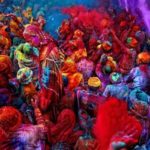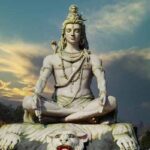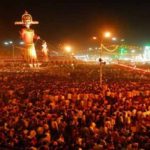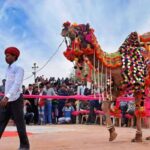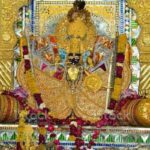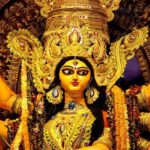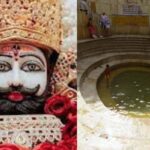Holika Dahan, also known as the bonfire of Holika, is a significant ritual observed in Rajasthan and various parts of India during the festival of Holi. In Rajasthan, this ritual holds immense cultural and religious importance. It usually takes place on the night before the main Holi festival, marking the victory of good over evil.
Communities in Rajasthan gather wood, dried leaves, and other combustible materials to build a large bonfire. People offer prayers and perform rituals around this fire, symbolizing the burning of the demoness Holika, who, according to Hindu mythology, tried to kill Prahlad, a devotee of Lord Vishnu, but ended up being destroyed herself.
During Holika Dahan, people sing and dance around the fire, spreading joy and happiness. It is also a time for socializing, as families and friends come together to celebrate the triumph of virtue. The ashes from the bonfire are considered sacred and are often taken home to ward off evil spirits.
Overall, Holika Dahan in Rajasthan is a vibrant and joyous occasion, filled with traditions, rituals, and the spirit of unity Rajasthan Holi Festival Tour Packages.
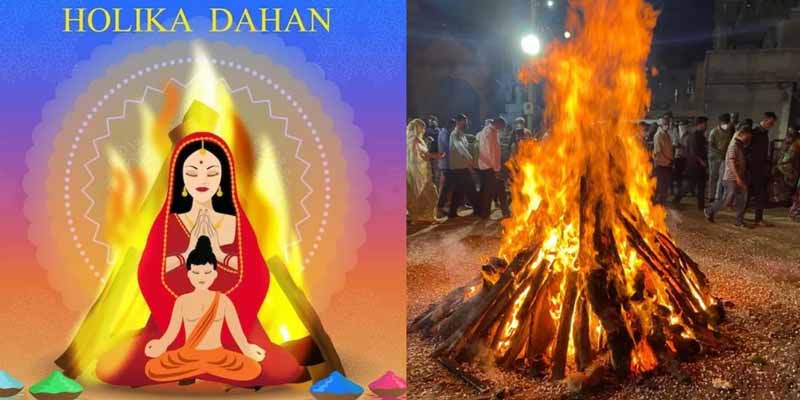
Holi 2024: History and Legends
Holi, the vibrant festival of colors, is celebrated with immense joy and enthusiasm throughout India, including the state of Rajasthan. Let’s delve into the history and legends associated with Holi in Rajasthan:
Legend of Holika and Prahlad: One of the most famous legends associated with Holi is the story of Holika and Prahlad. According to Hindu mythology, there was a powerful demon king named Hiranyakashipu who wanted everyone to worship him instead of Lord Vishnu. However, his own son, Prahlad, was an ardent devotee of Lord Vishnu. Angered by his son’s devotion, Hiranyakashipu conspired to kill Prahlad. He enlisted the help of his sister, Holika, who was immune to fire. Holika sat with Prahlad on her lap in a pyre, but due to Prahlad’s unwavering faith and devotion to Lord Vishnu, he emerged unscathed while Holika was burned to ashes. This victory of good over evil is celebrated as Holi.
Lathmar Holi in Barsana and Nandgaon: Rajasthan, particularly in the regions of Barsana and Nandgaon, celebrates a unique form of Holi known as Lathmar Holi. According to legend, Lord Krishna, in his mischievous playfulness, visited Barsana, the village of Radha, and teased her and her friends. In retaliation, the women of Barsana chased him away with sticks (lathis). This playful act is reenacted during Holi, where men from Nandgaon visit Barsana and are greeted with sticks by the women of Barsana.
Harvest Festival: In Rajasthan, Holi also marks the end of the winter season and the beginning of spring, coinciding with the harvest season. It is a time of celebration and thanksgiving for the good harvest and the forthcoming spring season. People exchange sweets and gifts, and communities come together to celebrate the abundance of nature.
Bonfire Ritual: Like in other parts of India, Rajasthan also observes the ritual of Holika Dahan, where a bonfire is lit on the eve of Holi to symbolize the burning of evil spirits and negativity. People gather around the bonfire, sing and dance, and perform rituals to seek blessings for prosperity and well-being.
Rangwali Holi: On the day of Holi, people in Rajasthan, like elsewhere in India, celebrate by smearing each other with colors, dancing to traditional folk music, and indulging in festive delicacies. The entire state resonates with the joyful spirit of Holi as people of all ages come together to partake in the festivities.
Overall, Holi in Rajasthan is not just a festival of colors but a celebration deeply rooted in mythology, tradition, and the spirit of community bonding. It showcases the rich cultural heritage and fervor of the people of Rajasthan Budget Tours.
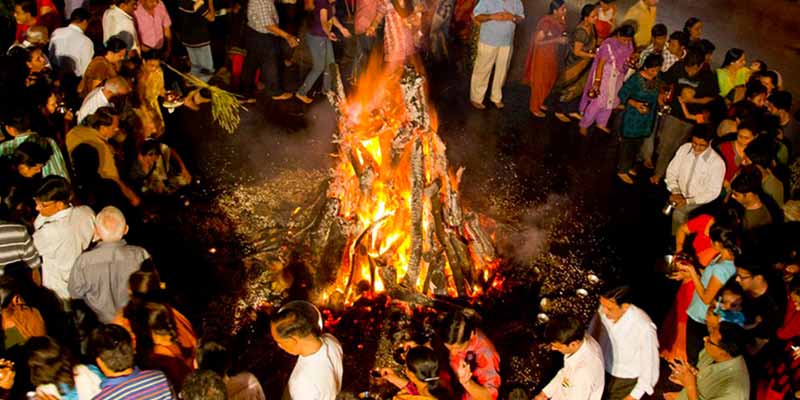
Story of Holika Dahan
Holika Dahan, also known as Holika bonfire, is a significant ritual observed during the Hindu festival of Holi, primarily in the northern regions of India, including Rajasthan. The tradition commemorates the victory of good over evil and is rooted in ancient Hindu mythology.
According to Hindu mythology, the story of Holika Dahan is associated with the legend of Prahlad and Hiranyakashipu. Hiranyakashipu was a powerful demon king who had obtained a boon from Lord Brahma, making him virtually indestructible. However, his son Prahlad was a devout devotee of Lord Vishnu, much to Hiranyakashipu’s dismay.
Hiranyakashipu wanted his son Prahlad to worship him instead of Vishnu, but Prahlad remained steadfast in his devotion to Vishnu. This angered Hiranyakashipu, who attempted to kill his son several times. However, each time, Prahlad was miraculously saved by the divine intervention of Lord Vishnu.
Finally, Hiranyakashipu sought the help of his sister, Holika, who was immune to fire. Together, they planned to kill Prahlad by tricking him into sitting on a pyre with Holika. As the fire was lit, Holika, thinking she was immune, sat on the pyre with Prahlad in her lap. However, due to Prahlad’s unwavering devotion and the protection of Lord Vishnu, Holika was burned to ashes, while Prahlad emerged unscathed.
This event symbolizes the victory of virtue over vice, and it is commemorated through the ritual of Holika Dahan. In Rajasthan, as in many other parts of India, people gather wood and other combustible materials to build a bonfire on the night before Holi. Effigies of Holika, representing evil, are often placed on the bonfire, and prayers are offered to seek the blessings of the divine for the triumph of good over evil.
The bonfire is lit amidst chanting of prayers and hymns, and people dance and sing around it, celebrating the victory of righteousness. It is a time for joyous festivities, where people come together to rejoice in the spirit of unity and love, marking the beginning of the colorful festival of Holi.
Holi Puja Items/Samagri
- A whole brown coconut
- Akshat (unbroken rice)
- A Kalash full of water
- Agarbatti and Dhoop (Incense sticks)
- Deep (oil lamp – sesame/mustard oil, cotton wick, and brass or earthen lamp)
- Turmeric (Haldi)
- Cotton thread (Kalava)
- Cow dung cakes and toys, idols of Holika and Prahlad made of cow dung (Badkula)
- Kumkum (Vermillion)
- Flowers
- Logs of wood
- Moong daal
- Batasha or any other sweet
- Gulal
- Gangajal
- Dhoop
- Karpoor
- Bell
- Homemade sweets and fruits
- Tulsi leaves and Sandalwood paste Chandan
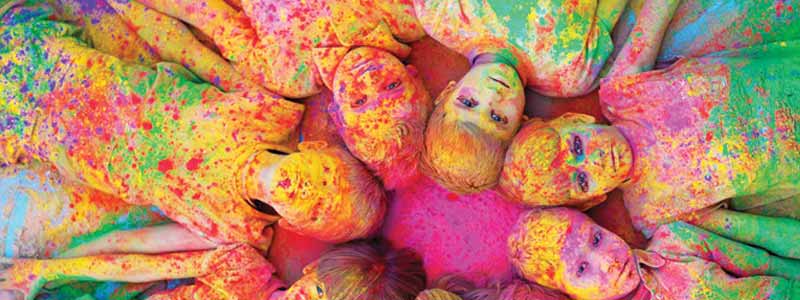
Symbolism of Colors in Indian Culture
Red: The colour of love, passion and fertility.
Orange: The colour of a new beginning and forgiveness
Yellow: Represents happiness, peace, joy, meditation, knowledge and learning.
Pink: Signifies kindness and compassion and positivity.
Green: Represents nature, life and harvest.
Blue: The colour of Lord Krishna’s complexion symbolises strength and spiritual growth.

